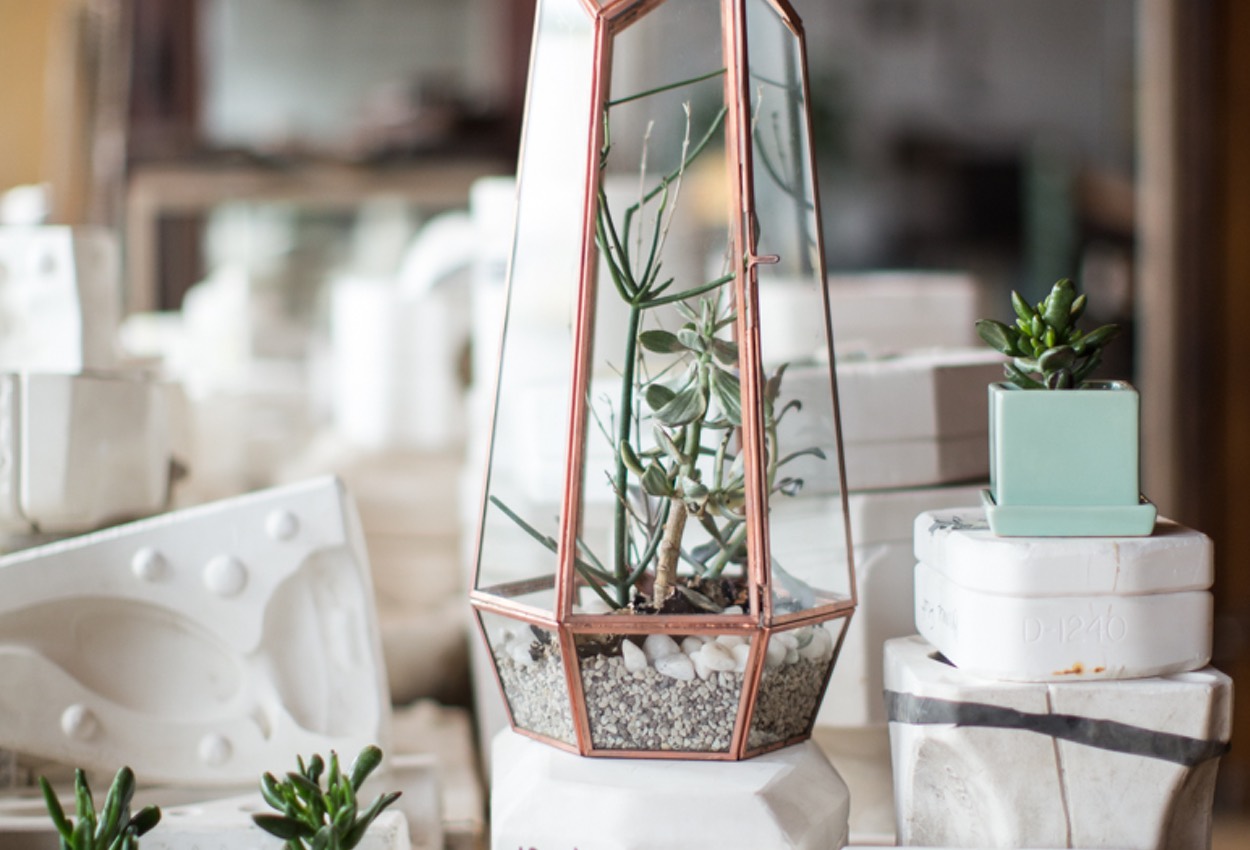
Succulents are, by nature, a “low-maintenance” plant. Considering they grow on their own in the middle of the desert where rain comes but once a year and seemingly nothing else can survive, you would think these guys are tough as nails. But bring them into your home and give them the five star treatment and they’ll lean over and die on you almost instantaneously. Or so it seems. In reality their death comes on slowly as they start to shrivel up and lose limb by limb. But it doesn’t have to be this way. Believe it or not, Succulents can actually thrive in your home so long as they are provided the proper TLC. Today we are sharing Tips from the Succulent Masters over at Sprout Home.
Sprout Home constantly has a wide variety of Succulents coming into the shop. These easy-going plants have caught the attention of novice and professional gardeners alike, from the home enthusiast to the garden designer, and there’s little wonder why…
Succulents can be found in a wide array of colors, from shades of blue and violet, vivid orange and scarlet to dusty and silver. If this were not enough of a visual display to boost their popularity, their growth habit also ranges from tight, prostrate growth to enormously upright. Added to all of this is their ease of care, securing their effective equation for popularity. A succulent plant can be broadly defined as one that has developed a means of water storage. Consider the fleshy leaves of Crassula ovata or “Jade” and of medicinal Aloe (Aloe barbadensis). These plump leaves store water from times of plenty for the plant to use during more arid periods. Their waxy exterior helps prevent any unnecessary loss of precious water. Another means is found in cacti, which as also “succulents.” Water is stored not in the leaves, but in the enlarged stems of cacti such as the spherical forms of Echinocactus.
When grown as houseplants, most succulents can do exceedingly well in a sunny window. A sunny spot is perfect for your succulent if the warmth of the sun’s rays can be felt on the skin. Several hours of exposure is ideal. Here, you can enjoy a dish garden of succulents, individual pots of choice plants or perhaps a terrarium. In a terrarium, you can view a full arid landscape in miniature in your own home! Larger specimens cannot always be placed directly in a window, so be sure to position it in a way to earn it as much sunlight as possible. Many succulents will make fine hanging specimens as well, an easy way to ensure plenty of sun. Senecio rowleyanus or “String of Peas” and Sedum morganianum, the “Burro’s Tail” plant are just two popular examples of the hanging succulent. Further learning on your specific plant may lead you to descriptions like “cool sun” and “dry sun,” which are indicators of the ideal light intensity they need. The nuance of succulents’ requirements is as vast as their appearance, making almost any light scenario an opportunity for a succulent in your home. For less intense locations, consider the genera Haworthia and Rhipsalis for your succulent of choice. In general, use a rocky, fast-draining medium for potting your succulents. Average potting mix won’t due and most retailers will carry multiple mixes labeled appropriately for your plant collection. This specific mix will dry quickly, allowing you to water your succulent thoroughly, but briefly. The plants will drink quickly to replenish their stored water supply, therefore it is essential that the roots dry quickly and that they are allowed to stay dry. Not only with this mimic their natural rhythm, but it will also prevent rot. Typically, you can water your succulent every 10-14 days during the growing season and as little as 4-6 weeks during the coldest and darkest days of the year. Keep in mind during the cool season that you’ll only want to water your plant enough to keep the leaves from shrinking, a sign that their water reserve is being depleted. Many succulents will also experience dormancy, either during the hot dry season, or the cool, dark season. For these succulents, take special care to withhold water until their growing season begins.
Sprout Home has a consistent supply of the popular plants discussed, but also a trove of succulents less commonly found on the market, opening the door to an ever-expanding collection whether you’re adding a young plant that can be held in the small grasp of two fingers or a specimen plant larger than the average gardener! Most of the time, these plants will need little more than your admiration, so take your time, choose wisely and enjoy!

Sprout Home is located at 745 and 744 N. Damen Ave. in Chicago and 44 Grand Street in Brooklyn, New York. Product orders and workshop information can be found at www.sprouthome.com



